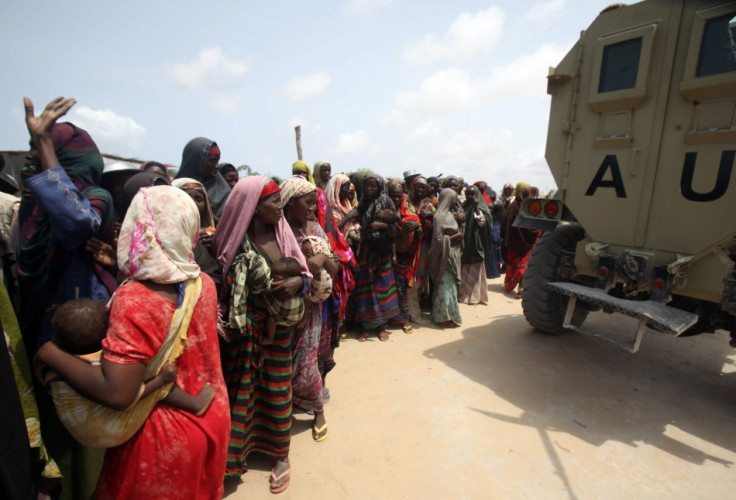Does Climate Change Cause Civil War?

A theory that climate change could be a cause in triggering conflict has been given a new boost after a new scientific study found a correlation between climate fluctuations and violence.
The reports explains tropical countries affected by the El Niño-Southern Oscillation are twice as likely to suffer internal unrest compared to the phenomenon's cooler, wetter counterpart, La Niña.
The authors of the study cite the civil war and famine that is devastating countries like Somalia as a typical example of what happens when a climate swing causes drought, increasing pressure on societies that are already living in very precarious conditions.
The study, published in the journal Nature, focuses on a naturally occurring pattern of climate change, but observations led the authors to expose the violent consequences human-caused warming can have.
But its authors say there is a disturbing lesson about violence driven by human-induced warming, which is expected to bite deep in coming decades.
"What it does show and show beyond any doubt is that even in this modern world, climate variations have an impact on the propensity of people to fight," says Mark Cane, a climate scientist at the Lamont-Doherty Earth Observatory at Columbia University in New York.
"It's difficult to see why that won't carry over to a world that's disrupted by global warming."
The El Niño cycle occurs every two to seven years and lasts from nine months to two years, often causing devastating losses in areas such as agriculture, forestry and fishing.
It starts when warm water builds on the western side of the tropical Pacific and shifts across the ocean, which can then cause sharp changes in rainfall patterns and temperatures, suddenly increasing temperatures and drying winds in much of Africa, South and Southeast Asia and Australia.
However, later on, the pattern reverses with water in the eastern Pacific cooling and heavy rains affecting those same regions.
This phase of the cycle is known as La Niña.
The study looked at ENSOs data from 1950 to 2004 and compared it with civil conflicts, violence that had taken place within national borders in 175 countries and 234 conflicts.
The study concluded that in countries whose weather cycles are determined by ENSO, the risk of civil conflict occurring during La Niña was about 3 per cent; during El Niño, this doubled to 6 per cent, while in contrast, countries not affected by ENSO remained at a stable 2 per cent.
According to the study, El Niño may have played a role in 21 per cent of civil wars worldwide, with 30 per cent in those countries being directly affected by El Niño.
According toSolomon Hsiang of Columbia's Earth Institute, the lead author of the paper, El Niño is an invisible factor, but the scientist also pointed out other factors also contribute to conditions that favour intra-national border conflict.
Sudden climate cycle changes often also caused loss of crops, hurricanes damage; increases the spread of epidemics such as water-borne disease, amplifies hunger, loss, unemployment and inequality, which fuels division and tear the communities apart.
"Even though we control for all of these factors simultaneously, we still find that there's a large and pervasive El Niño effect on civil conflicts," Hsiang said in a teleconference.
Speaking of the current crisis in the Horn of Africa, Hsiang said it was a "perfect example" of the hidden damages of an El Niño.
"Forecasters two years ago predicted that there would be a famine in Somalia this year, but donors in the international aid community did not take that forecast seriously," says Hsiang.
"We hope our study can provide the international community and governments and aid organisations with additional information that might in the future help avert humanitarian crises that are associated with conflict."
© Copyright IBTimes 2025. All rights reserved.





















